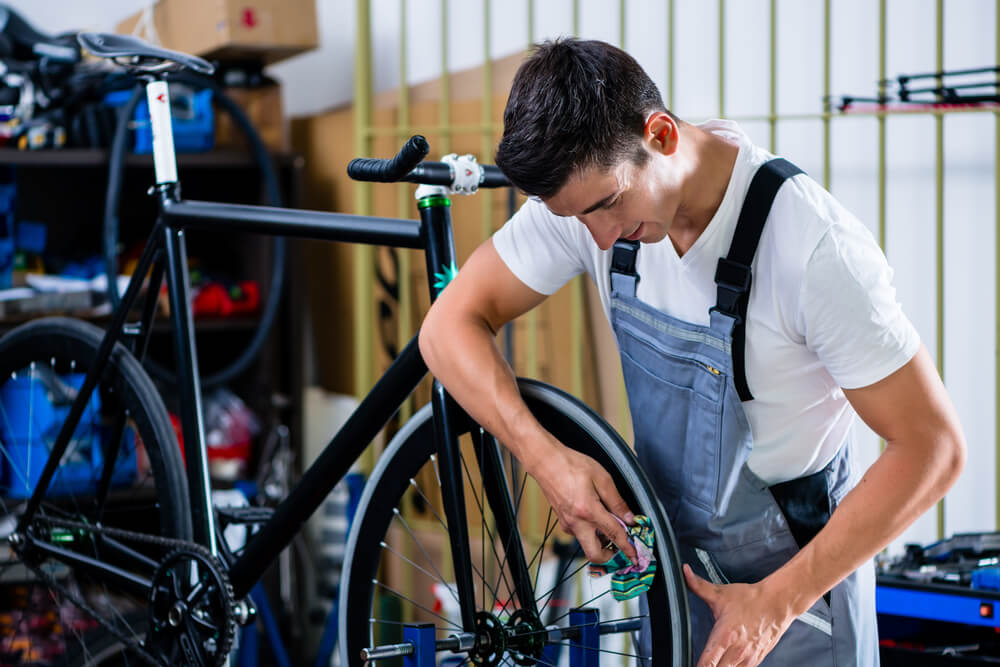
Are You Ready for Spring Bicycle Rides in Colorado?
Spring has sprung, and cyclists throughout Colorado are enjoying the warmer weather. If your bicycle has been sitting in the garage or basement all winter, you’ll want to inspect it to make sure it’s ready to go before hitting the roads, bike paths, and gravel trails.
The Colorado bicycle accident attorneys at the Wilhite Law Firm are cycling enthusiasts and strong advocates for bicycle safety. We are committed to helping bicyclists in every way possible. Here, we offer some general maintenance tips to help cyclists prepare for spring rides.
How Do I Get My Bike Ready for Spring in CO?
Wash your bike.
Your bike may benefit from a little spring cleaning, especially if you rode during the winter and the bike accumulated some salt, sand, or brine residue from salted roads. Wash off the salt, grime, and grit from winter with low-pressure water from a hose. Don’t use a high-pressure sprayer because it can force water into places it shouldn’t go.
Check brake and shift cables.
If your bike has a mechanical shifting drivetrain or cable-actuated brakes, it’s advisable that you inspect your shift cables and brake cables housing for proper tension and nicks. Grime from slushy winter roads can cause these components to malfunction. If you see any fraying, replace the cable. If they are stretched out, replace them or tighten them up. If everything looks good, put a few drops of light spray lube in the shifters to make sure they are functioning smoothly.
Check the brake pads.
Inspect the brake pads to make sure they are not worn and in need of replacement. Many brake pads have a wear line indicator. You’ll want to swap the brake pad for a new one if it is worn below this indicator line. If a brake pad is worn down to the metal shoe, it can cause scoring on the wheel rim and take longer to stop the bicycle when you apply the brakes. You can use a toothbrush to remove bits of grime between the brake blocks and rims.
Check the headlight
Colorado bike law requires that bicycles ridden on the road must be equipped with a white headlight that is visible at least 500 feet at night. If you use a headlamp powered by batteries, make sure the batteries are fresh and the light is bright.
Do a quick run-through with the gears.
Shift through all the bike’s gear combinations. You want to ensure the chain moves smoothly and without any skips or stiff spots. Make sure you listen for any popping, clicking, or grinding sounds, as these can be a sign of drivetrain complications. If the chain is skipping or jump gears, it can cause the chain to jam or cause an accident. The bicycle derailleur may need adjustment to prevent the chain from skipping.
Check tire pressure.
All tires lose air pressure if they sit for a long period of time. If your bike has been put away all winter, the tires will likely need air. Use a high-quality air pump with a base to stand on and pressure gauges that are easy to read. When inflating, make sure you use the recommended tire pressure level.
Check the spokes.
Because wheel spokes keep your wheels straight, you need to check to make sure they are all tight. A spoke wrench will allow you to tighten the spoke at the base. Try not to overtighten. We recommend checking your spokes every two or three months.
Consider adding rearview mirrors.
If your ride on Colorado roads, you should consider adding mirrors to the end of your handlebars, if you don’t have them already. These convex mirrors fit in place of the end tube plugs in the handlebars and allow you to see car traffic and other riders approaching from behind you. Being aware of traffic approaching can help prevent an accident.
How to Prepare Your Bike for Next Winter
We recommend you keep the following in mind when readying your bike for winter:
Get heavy-duty tires.
Due to the harsher conditions, punctured tires are more common in the winter months in Colorado. Another reason is that by the time winter comes around, many cyclists have tires that have worn thin. This increases the risk of a flat.
Replace your skinny road tires with wider ones that have more traction and are puncture-resistant. Heavy-duty tires will likely have a better tread, allowing you to grip wet and loose surfaces better.
Make use of mudguards.
Mudguards protect your bike from muck and dirty water. Road dirt finds its way into the drivetrain and headset, and water. A set of mudguards will protect much of the bike. If you are riding with others behind you, they’ll appreciate it as well because mudguards help reduce wheel spray.
Make cleaning a priority.
Riding in winter weather will make your bike accumulate dirt faster. This is why it’s critical that you clean your bike often. Following a wet ride, try to hose it down and treat it with a water-dispersant spray. Re-lube the chain as well. This will help the components last longer as well as help you to avoid rust.
Get new brake pads.
When a brake pad is down to the metal, it exposes you to dangerous situations. New brake pads specific for cold and wet conditions won’t wear as quickly and will offer better braking than a standard pad.
Contact a Colorado Bicycle Accident Lawyer
The popularity of cycling in Colorado means that serious bicycle accidents involving automobiles occur all too often, especially in the warmer months. Many motorists violate the rights of cyclists riding on the roads and cause preventable crashes. If you or a loved one has been injured in a bicycle accident caused by another vehicle in Denver or elsewhere in Colorado, you may be entitled to seek compensation.
The Colorado bicycle accident attorneys of The Wilhite Law Firm are ready to help you understand your legal options. If we believe are entitled to file an injury claim, we will help you seek the maximum compensation available to you. Our lawyers will protect your rights and help you get your life back on track after the accident.
Call now for a free, no-obligation consultation we can discuss your legal options.






















